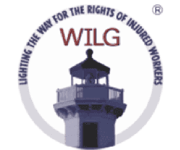Is Montana No-Fault State or a Tort State?

Is Montana No-Fault State or a Tort State?
At Bliven Law Firm, P.C., there are many personal injury questions we come across when working with our clients. “Is Montana a no-fault state?” is one of the questions we hear most often. Below, we answer this question and discuss other important information you should know.
In short, the answer is no. Montana is actually a tort state – also known as an at-fault state. In the United States, this is the most common form of liability law relating to fault and liability. Oregon is also a tort state.
What Does it Mean to Be an “At-Fault” State?
In the event that a car accident takes place, the driver who caused the accident would use his or her insurance to pay for damages the other driver incurred. In other words, if you are injured in an accident, the negligent person or entity responsible for your injury would be responsible for paying for your damages. You may also recover compensation from your own insurance company.
It is important to remember that negligence of the plaintiff, or the victim of the accident, must not be greater than:
- The negligence of the defendant
- The combined negligence of parties against whom you’re seeking damages
Contact Us Today Bliven Law Firm, P.C.
Call Us Today:
406-755-6828
What Does It Mean to Be a No-Fault State?
In contrast, a no-fault car insurance system allows a driver to receive compensation for damages directly from their own insurance policy. There is no need to prove fault or liability. Only about 30% of states in America have no-fault insurance systems.
What is Montana’s “No-Fault” Medical Payments Coverage?
Most insurance policies in Montana have no fault medical payments coverage, also known as “med pay” for short. In other states, this is generally known as PIP – for personal injury protection. This is an optional coverage that you need to purchase, but it is important coverage. This covers your medical expenses in the case of a crash or covered injury, regardless of fault. The classic example is that if you hit a deer going down the Swan River Highway and are injured, this coverage will pay related medical bills. This coverage is often overlooked in a crash, whether caused by someone else’s negligence or not, if you paid premiums for this coverage, you can use it to pay related medical expenses.
What Happens If Both Parties Are at Fault?
In Montana, the state follows the modified comparative negligence rule. Under this rule, if you bear part of the blame for the accident which caused your injury, then this will affect the amount of compensation that you can recover. You can still recover damages in a personal injury lawsuit, but the percentage of blame you are responsible for will be taken out of the total amount of your recovery.
For instance, suppose you were recently in a car accident where another driver ran a red light and hit you. In this example, moments before the accident, you were also driving recklessly by speeding through the intersection. You were injured in the accident and decide to sue the other driver for $1,000,000. The judge at trial determines, based on the evidence, that you are 10 percent responsible and the other driver is 90 percent responsible for the accident. This means that you would receive 90 percent of the $1,000,000. The total amount would be reduced by 10 percent leaving you with $900,000.
Questions About an Accident? Contact Our Car Accident Attorneys
After a car accident, it is normal to have questions like “Is Montana a no-fault state?” or “How do I file a car insurance claim?” We understand that each injured victim is in a unique situation.
The personal injury attorneys at Bliven Law Firm, P.C. handle all types of personal injury cases in Montana and Oregon. We can help you after a car accident, truck accident or any accident where you were seriously injured due to the negligence of another person or entity.
Let Our Team Be Your Advocates
If you have been injured by a car wreck or suffered any type of serious injury, call our Kalispell personal injury lawyers at 406-755-6828 or fill out the
no-obligation online case form. We will respond promptly. When you hire our firm you will have the confidence of knowing that assisting you and resolving your
situation and claim is our priority. Contact us for your free case evaluation today.
















